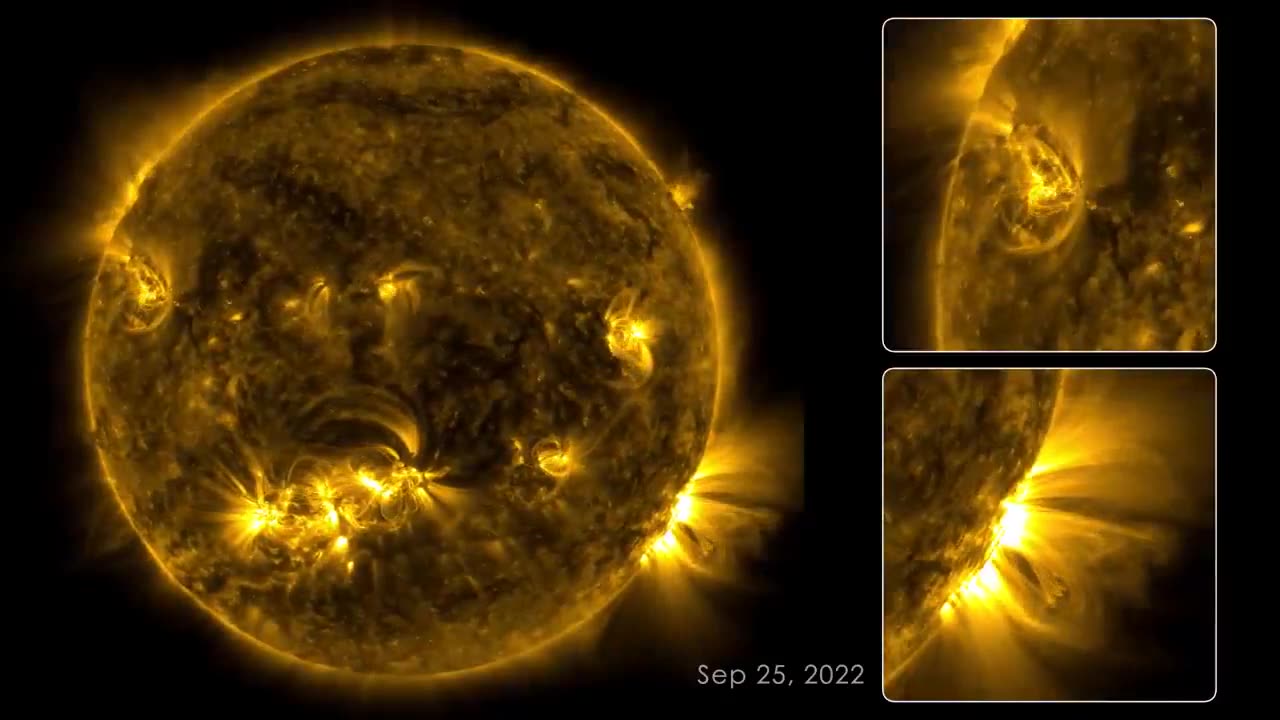Premium Only Content

133 days on sun
The Sun is a massive, hot, and luminous ball of gas primarily composed of hydrogen and helium. It is the central star in our solar system and plays a crucial role in providing heat and light to Earth. Over a span of 133 days on the Sun, various dynamic processes occur, including the following:
1. Solar Flares: The Sun experiences frequent bursts of energy known as solar flares. These intense releases of radiation can impact space weather and communications on Earth.
2. Sunspots: Sunspots are dark, cooler areas on the Sun's surface caused by magnetic activity. They appear in cycles, and their number and distribution change over time.
3. Solar Wind: The Sun constantly emits a stream of charged particles called the solar wind. This wind carries material from the Sun's atmosphere into space and affects the Earth's magnetosphere.
4. Solar Eruptions: Occasionally, the Sun experiences massive eruptions called coronal mass ejections (CMEs). These events release enormous amounts of energy and can disrupt satellite communications and power grids on Earth.
5. Nuclear Fusion: In the Sun's core, nuclear fusion processes occur, where hydrogen atoms combine to form helium, releasing an immense amount of energy in the form of light and heat.
6. Photosphere: The Sun's visible surface, known as the photosphere, appears as a glowing disc. It emits most of the Sun's visible light and has an average temperature of about 5,500 degrees Celsius (9,932 degrees Fahrenheit).
7. Solar Rotation: The Sun doesn't rotate uniformly; it exhibits differential rotation, with its equator rotating faster than its poles. This causes changes in the Sun's magnetic field over time.
Throughout this 133-day period, these processes continue to shape the Sun's dynamic behavior, influencing its activity and its impact on our solar system.
-
 1:58:28
1:58:28
Kim Iversen
11 hours agoSHOCKED! BETRAYED! RFK Jr. FLIPS on Measles Vaccine? | NATO Trap: Europe Could Drag The US to WW3
107K206 -
 18:37
18:37
Clownfish TV
9 hours agoThe Oscars Just EMBARASSED Disney and Emilia Pérez...
65.9K24 -
 56:28
56:28
Glenn Greenwald
11 hours agoDocumentary Exposing Repression in West Bank Wins at Oscars; Free Speech Lawyer Jenin Younes on Double Standards for Israel's Critics | SYSTEM UPDATE #416
111K85 -
 1:03:34
1:03:34
Donald Trump Jr.
13 hours agoZelensky Overplays His Hand, More Trump Wins, Plus Interview with Joe Bastardi | Triggered Ep.221
175K142 -
 1:13:16
1:13:16
We Like Shooting
21 hours ago $6.60 earnedDouble Tap 399 (Gun Podcast)
61.1K3 -
 1:00:20
1:00:20
The Tom Renz Show
1 day agoTrump Schools Zelensky, The Epstein Files FAIL, & What RFK Will Mean for Cancer
66.6K21 -
 42:47
42:47
Kimberly Guilfoyle
15 hours agoThe Trump effect: More Major Investment, Plus America First at Home & Abroad. Live w/Ned Ryun & Brett Tolman | Ep. 201
146K41 -
 1:29:23
1:29:23
Redacted News
13 hours agoWW3 ALERT! Europe pushes for war against Russia as Trump pushes peace and cutting off Zelensky
178K298 -
 57:56
57:56
Candace Show Podcast
17 hours agoHarvey Speaks: The Project Runway Production | Ep 1
167K107 -
 56:31
56:31
LFA TV
1 day agoEurope’s Relationship With America Is Over | TRUMPET DAILY 3.3.25 7PM
52.6K11